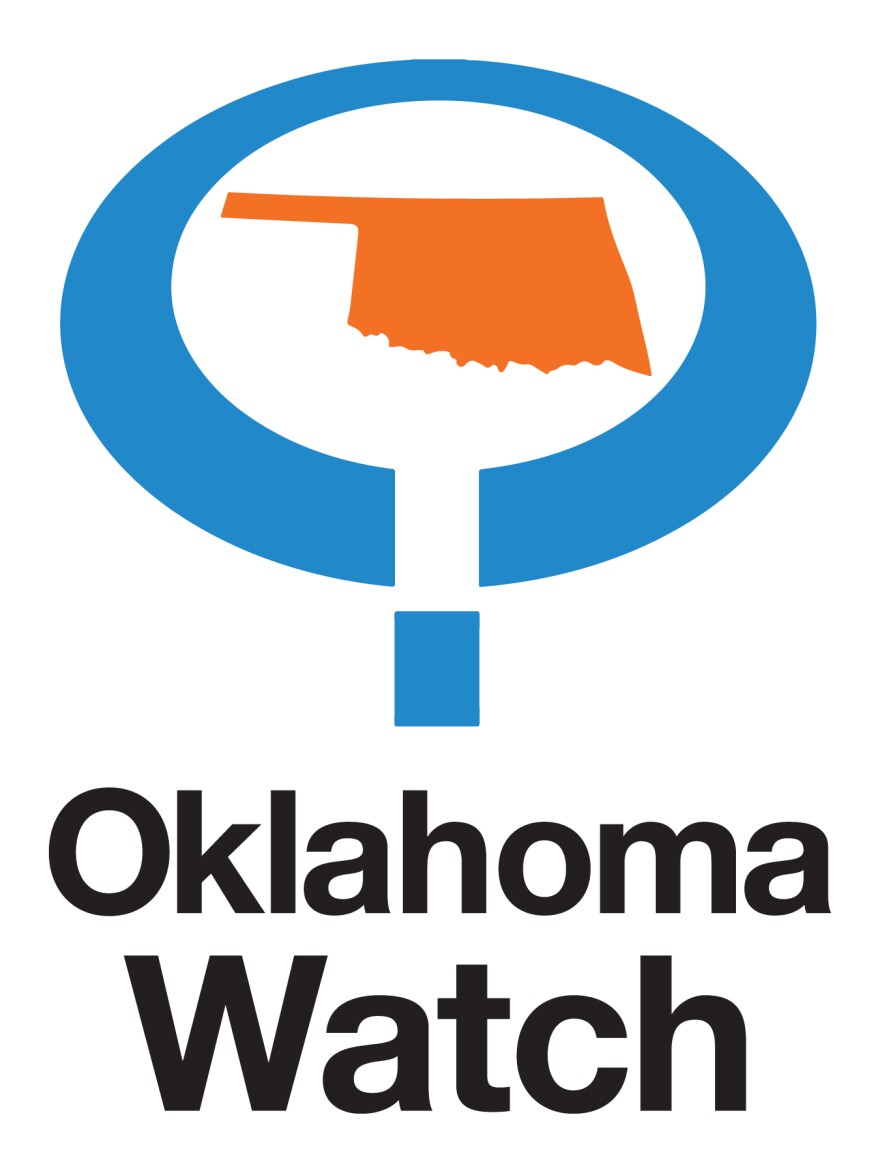A $3 million taxpayer-funded program will soon give schools across the state access to a relatively untested “panic button” app that can alert authorities and staff if there is an active shooter, fire or emergency in the school.
Funding for the Rave Panic Button app was largely approved behind the scenes this year. Although it was not included in the state Education Department’s budget requests, lawmakers passed funding for the program through a line item in the department’s 2020 budget allocation.
In addition to the $3 million price tag, the app comes with recurring maintenance fees, expected to be $2 million for two years, according to an Education Department spokeswoman. The department will pick up that cost. Districts can choose whether to use the system.
There was a bill this year to direct school districts to implement a panic button alert system by Sen. Nathan Dahm, R-Broken Arrow, but it stalled during the legislative session.
Ethics Commission reports show company officials were busy lobbying state leaders shortly before the budget deal was finalized.
Rave Mobile Safety, a Massachusetts-based company that makes the app, employs a lobbyist at the State Capitol — the same lobbyist who represents the Oklahoma Sheriff’s Association, which voted to endorse the program in March.

The lobbyist, Steve Edwards, reported purchasing meals for a number of state lawmakers, but two stand out: a $52 dinner on May 21 with three key Education Department staffers: state Superintendent of Public Instruction Joy Hofmeister, Chief of Staff Phil Bacharach and Chief of Government Affairs Carolyn Thompson, records show. He also reported spending more than $50 on a dinner with Hofmeister a month earlier, on April 17.
In a statement, the department defended the lobbyist meals.
Hofmeister regularly meets with representatives of businesses and nonprofits, said Steffie Corcoran, a department spokeswoman. She also toured the Norman 9-1-1 center along with state legislators to see how Norman schools has implemented the Rave system.
“We are excited about how the Rave system will significantly enhance school safety.
“Although the department did not request this in our budget, we understand why legislators included a line item to implement a mobile safety app for schools,” she said.
The panic button is a cell phone app that will be available to staff at every school in the state. The $3 million provides access to all school districts, and Oklahoma is the third state to implement the service in schools statewide. The others are Arkansas and Delaware.
The panic button works like this: A teacher or other staff member uses the app to dial 911, which simultaneously alerts authorities and on-site staff of an active shooter, fire or other emergency. The app gives a 911 operator immediate access to the caller’s specific location, as well as building floor plans and points of entry. The Rave Mobile Safety website claims this enhanced coordination saves time and lives.
It also allows the caller to text 9-1-1 if they are afraid or unable to speak, according to the Oklahoma Sheriff’s Association.
The program is largely untested, and there have been some concerns over reports of the app’s failure to notify emergency responders or of false alarms, such as one that occurred at an Arkansas elementary school in 2015.

But law enforcement in areas where it’s being implemented, including one Oklahoma district and individual districts in New York, California and Florida, have found success using the system.
Norman Public Schools has implemented the app and has so far used it several times for medical situations, said Alesha Leemaster, a district spokeswoman. She said the app’s immediate, consistent communication with key people improves response time, which is critical.
All public and private K-12 schools in Michigan’s Eaton County use the Rave app, which was funded by a state school safety grant. Eaton County Central Dispatch Director Michael Armitage says the panic button system has proven to be useful in various situations since it was implemented in 2015.
“We encourage use any time they’re contacting 911,” Armitage said. Schools in his area have used it when there’s been a threat outside the school, such as a person with a weapon. But medical emergencies are the most common.

Armitage says the app has brought 911 into the planning process for school safety, building a stronger relationship between emergency services and school administrators.
With school shootings in the U.S. becoming more common and deadly, state and local leaders are searching for ways to assuage fears of violence and keep students and teachers safe. To do that, many schools are investing in products and technologies. School security has grown to an estimated $2.7 billion market and is expected to continue growing an average 1 percent per year, according to IHS Markit, an analytics firm.
But there’s little evidence these technologies work to prevent or mitigate violence in schools. Last year The Washington Post surveyed schools across the country that had experienced a shooting since 2012; half replied there was nothing they could have done, and several schools emphasized the need to build relationships with students, who often hear about threats before teachers do.








